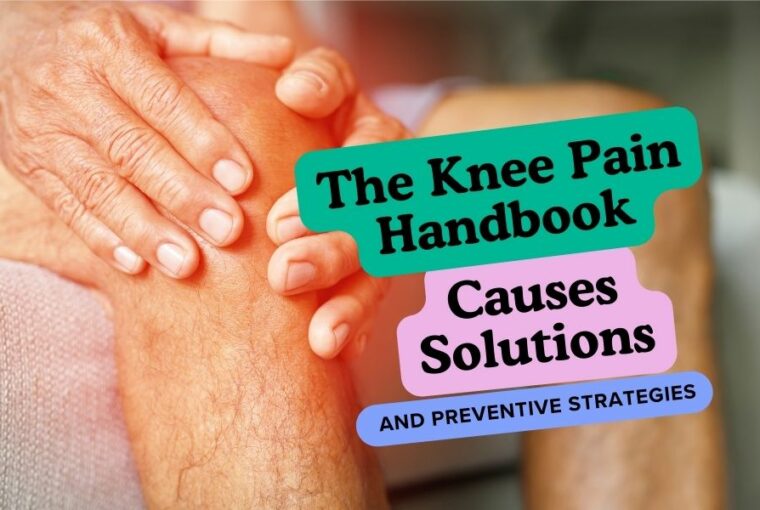Knee pain is a pervasive issue that transcends age, lifestyle, and activity levels, affecting millions of individuals worldwide. It’s more than just a symptom; it’s a signal from your body that something is amiss, either due to an injury, an underlying condition, or the wear and tear of daily life. The knee, a complex and vital joint in human mobility, can become a source of significant discomfort and disability when afflicted by pain. This discomfort can range from a mild annoyance to a severe impediment, potentially sidelining individuals from their daily routines and cherished activities.
Understanding knee pain involves peeling back layers, from the intricate anatomy of the knee to the diverse causes contributing to discomfort. Whether it’s a sudden injury that sends a jolt of pain through your joint or a creeping ache that has worsened over time, knee pain demands attention and action. This guide aims to offer insight into the common culprits behind knee pain, effective strategies for diagnosis, and a spectrum of treatment options tailored to various needs and conditions.
Understanding Knee Pain
Knee pain is a symptom that can emerge from a wide array of sources, ranging from acute injuries to chronic conditions. To fully grasp the complexities of knee pain, it’s essential to start with the basics of knee anatomy and then delve into the common causes and risk factors.
Anatomy of the Knee:
The knee isn’t just a simple hinge; it’s one of the most intricate joints in the body, designed to withstand a considerable amount of stress from everyday activities like walking, bending, and jumping. It consists of bones, cartilage, ligaments, and tendons that work in harmony:
- Bones: The knee joint involves three main bones: the femur (thigh bone), tibia (shin bone), and patella (kneecap).
- Cartilage: Two types of cartilage in the knee include the menisci (two crescent-shaped discs that absorb shock and cushion the joint) and articular cartilage (a smooth surface that covers the ends of the bones and helps them glide easily).
- Ligaments: These tough bands of tissue connect bones to other bones. The knee has four primary ligaments that stabilize the joint during movement.
- Tendons: Tendons connect muscles to bones. The quadriceps tendon connects the quadriceps muscle (front of the thigh) to the patella, which is then connected to the tibia by the patellar tendon.
Common Causes:
Knee pain can arise from various factors, each with its unique implications and treatment approaches:
- Injuries: These are among the most frequent causes of knee pain, including ligament sprains (ACL, MCL, LCL), meniscal tears, and patellar fractures.
- Arthritis: Several types of arthritis can affect the knee, but osteoarthritis is the most common, especially among older adults. Rheumatoid arthritis and gout are other forms that can cause knee pain.
- Overuse: Repetitive motion or overloading the knee in sports, work, or daily activities can lead to conditions like patellar tendinitis and bursitis.
- Mechanical Problems: Issues such as a dislocated kneecap, iliotibial band syndrome, and loose bodies within the joint can cause pain and mobility issues.
Risk Factors:
Understanding the risk factors for knee pain can help in prevention and management:
- Age: The risk of knee pain increases with age due to wear and tear on the joint.
- Weight: Excess weight puts additional stress on knee joints, increasing the risk of knee pain and osteoarthritis.
- Gender: Women are more likely than men to experience certain types of knee pain, partly due to differences in anatomy and hormone levels.
- Physical Activity: Certain sports and occupations that involve heavy use of the knees can increase the risk of knee pain.
- Previous Injuries: Having had a knee injury in the past makes it more likely to injure the knee again.
By dissecting the anatomy, causes, and risk factors associated with knee pain, we lay the groundwork for a more informed approach to diagnosis, treatment, and prevention, setting the stage for a deeper dive into the symptoms and diagnostic processes that follow.
Symptoms And Diagnosis
Recognizing the symptoms of knee pain and understanding the diagnostic process are crucial steps toward obtaining the right treatment and relief. Knee pain can manifest in various ways, and its symptoms often depend on the cause of the pain.
Symptoms:
Knee pain can present with a range of symptoms that indicate the nature and severity of the underlying issue:
- Pain: The pain can be sharp and sudden or dull and chronic. It might be localized to a specific area of the knee or widespread throughout the joint.
- Swelling and Stiffness: Swelling can occur due to inflammation or injury, leading to stiffness and reduced range of motion.
- Redness and Warmth: These signs can indicate inflammation or infection within the joint.
- Weakness or Instability: A feeling that the knee might give way under stress or weight.
- Popping or Crunching Noises: These sounds might indicate cartilage wear or mechanical issues within the joint.
- Inability to Fully Straighten the Knee: This symptom can result from swelling, pain, or mechanical blockage within the joint.
When to See a Doctor:
It’s important to know when knee pain warrants medical attention:
- Severe Pain: Especially if it starts suddenly or without an obvious cause.
- Significant Swelling: Swelling that occurs rapidly or without a clear reason.
- Deformity: Visible changes in the appearance of the knee.
- Inability to Bear Weight: Difficulty or inability to walk or stand on the affected leg.
- Lack of Improvement: Pain that doesn’t improve with rest and home care within a few days.
Prevention And Management
Taking steps to prevent knee pain involve a multifaceted approach that includes lifestyle modifications, regular exercise, and attention to daily activities to ensure the knee is protected from undue stress. Maintaining a healthy weight is crucial as each extra pound adds significant strain to the knee joints, thereby increasing the risk of pain and injuries. Engaging in regular, moderate exercise such as swimming, cycling, and walking not only strengthens the muscles around the knee, providing better support and stability, but also keeps the joint flexible and lubricated.
Strengthening the quadriceps and hamstrings is particularly important for knee stability, and incorporating exercises like squats, lunges, and leg curls into your routine can be beneficial. Opting for low-impact cardiovascular activities can improve heart health without putting excessive pressure on the knees. Additionally, incorporating flexibility and balance exercises, such as stretching and yoga, into your fitness regimen can improve joint function and reduce the risk of injuries.
The use of supportive footwear is essential in maintaining proper leg alignment and balance, which in turn helps in protecting the knees during physical activities. For individuals engaged in high-risk sports or occupations, wearing knee guards and braces can offer additional support and prevent injuries. It’s also important to practice proper form and technique in all physical activities, from exercising to lifting heavy objects, to avoid putting unnecessary stress on the knee joints.
Modifying the workplace and daily routines to minimize knee strain can also contribute significantly to knee pain prevention. Making ergonomic adjustments, such as using a footrest if seated for long periods, and alternating between different tasks to avoid repetitive motions can help in keeping the knees healthy.
By adopting these strategies, individuals can effectively reduce the risk of knee pain and enhance their overall joint health, ensuring greater mobility and quality of life.




